Meet The Unique Twelve-Wired Bird-Of-Paradise
Have you ever heard of the Twelve-Wired Bird-of-Paradise? It is scientifically known as Seleucidis melanoleucus.
This bird derives its name from the Latin word 'Seleucidis,' which means 'god-sent migratory birds' that destroy or combat locusts. 'Melanoleuca,' on the other hand, means 'black and white.'
This article features both male and female birds, and you will discover their differences as you browse through the photos.
Noticeably different from the female, the adult male has velvety black upper parts, including its head, and its lower breast feathers are green-tipped.
The male's flank flumes and underpants are bright yellow. Interestingly, this yellow color fades after death.
Meanwhile, the adult female's underparts have uniform black bars. Both sexes exhibit similarities in some body parts, such as the eyes, feet, and legs, which are pinkish.
In terms of body size, females are significantly larger, growing to about 35 centimeters, while males reach around 33 centimeters.
They thrive in swampy forest areas as well as flat lowlands, feeding on nectar, insects, frogs, arthropods, and fruits.
These species exist in abundant numbers, meaning they are not considered to be nearing extinction.
If you want to learn more about this fascinating bird, keep reading and check out the photos below.
These are male and female twelve-wired birds-of-paradise.
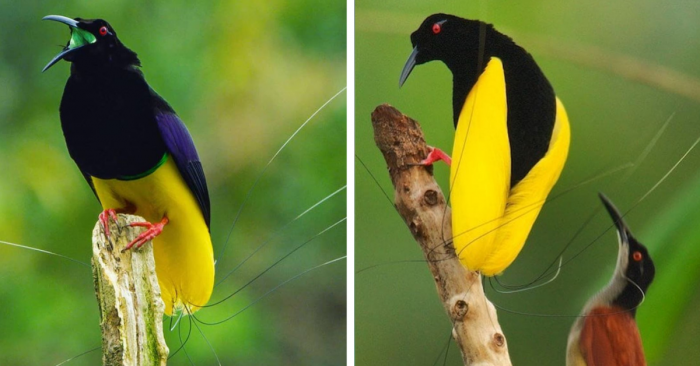
A closer look at the male twelve-wired bird-of-paradise.
As mentioned, the adult male's upper parts, including its head, are velvety black, and its lower breast feathers are green-tipped.
Its flank flumes and underpants are bright yellow. Interestingly, this yellow color fades after death.
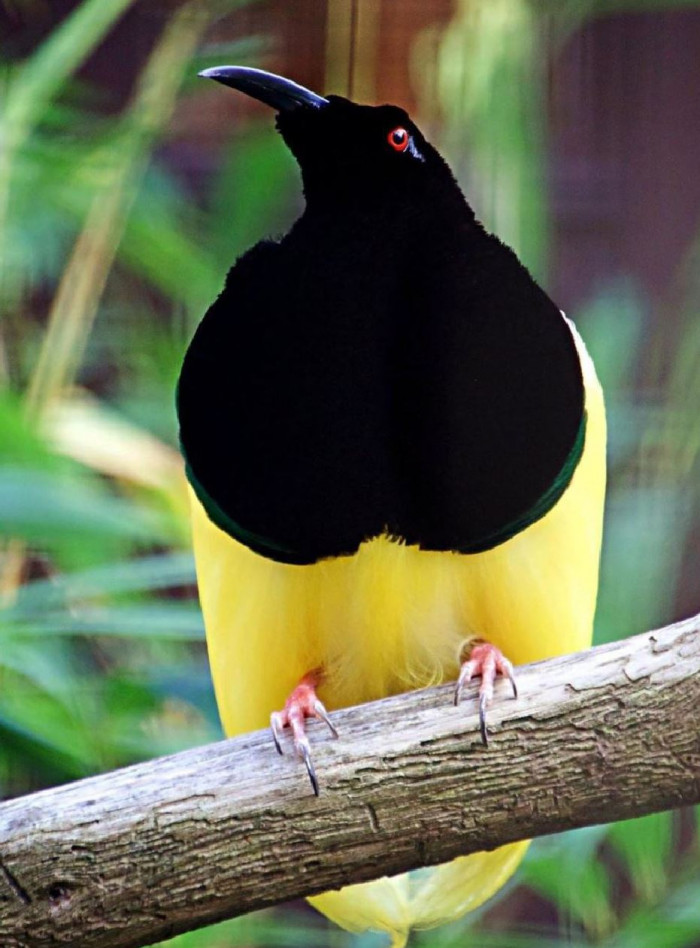
Meet its female counterpart.
The female twelve-wired bird-of-paradise can be distinguished from the male by its coloration. Its upper parts are mostly brown, while its underparts have uniform black bars.
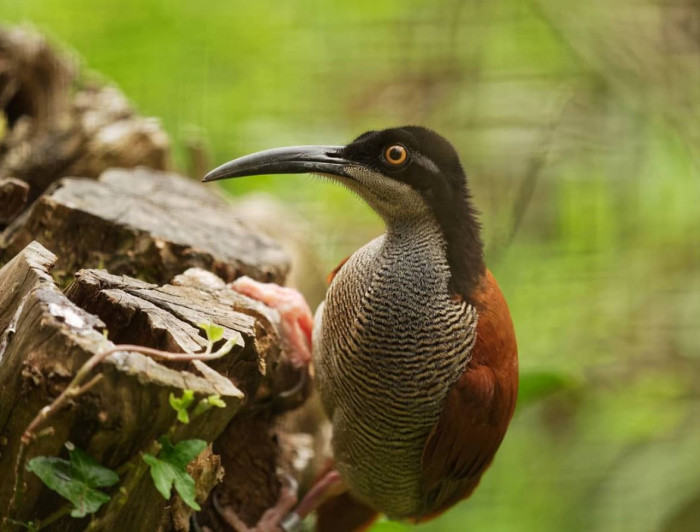
Showing off its twelve blackish, wire-like filaments.
Emerging from the rear of these plumes are twelve wire-like filaments that are black in color. These bend back toward their bases, sweeping forward over their hindquarters.
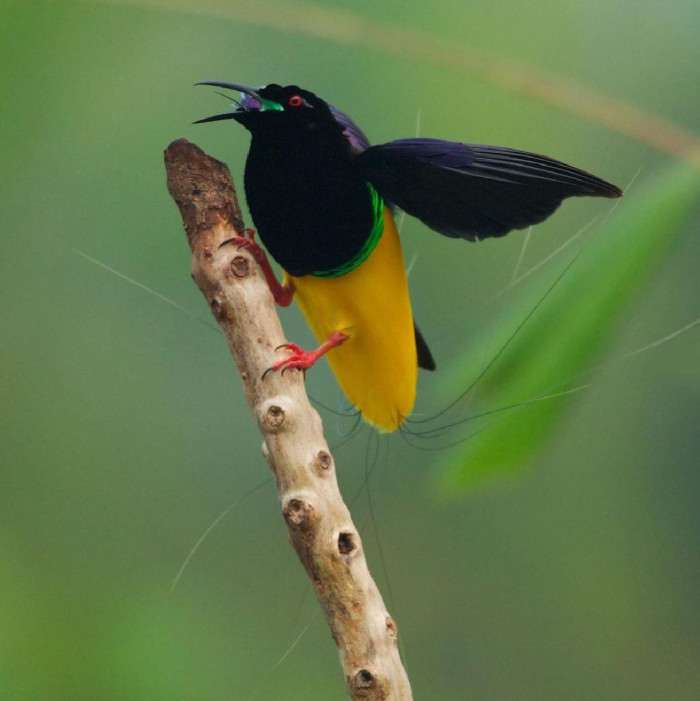
Males are highly territorial.
He ensures that he is at least 700 meters away from other males within a given area.
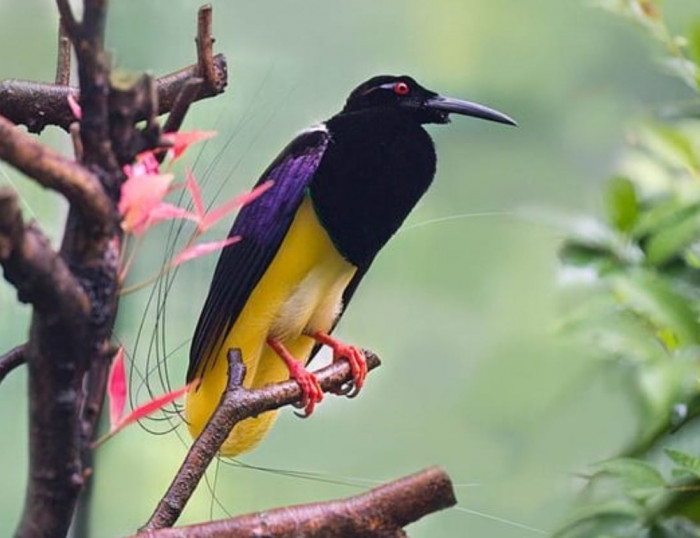
Habitat.
These birds can be found in the lowland rainforests of Papua New Guinea, including the neighboring island of Salawait, Indonesia. They thrive in swampy forest areas as well as flat lowlands.
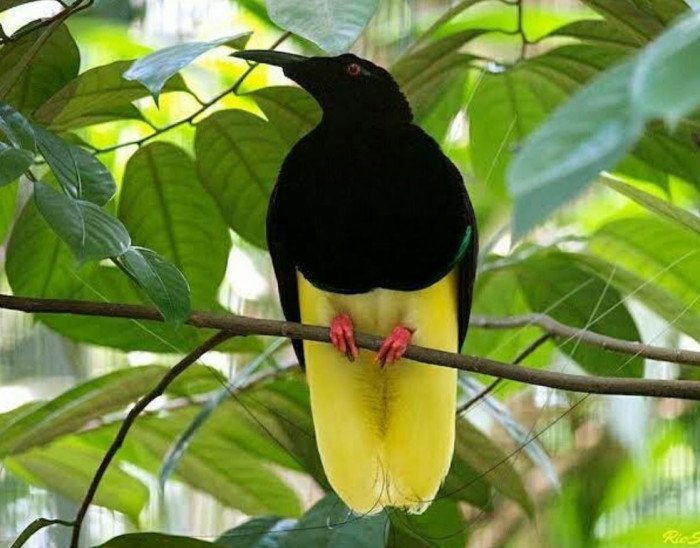
Male displaying himself at traditional perches.
Here's a male on a tree stump, trying to attract the opposite sex.

They are sexually dimorphic.
Being sexually dimorphic means that males differ from females in terms of color, structure, or size. As you have seen the differences between the two sexes, it is evident that this species is sexually dimorphic, though both have strong pink feet and large claws.
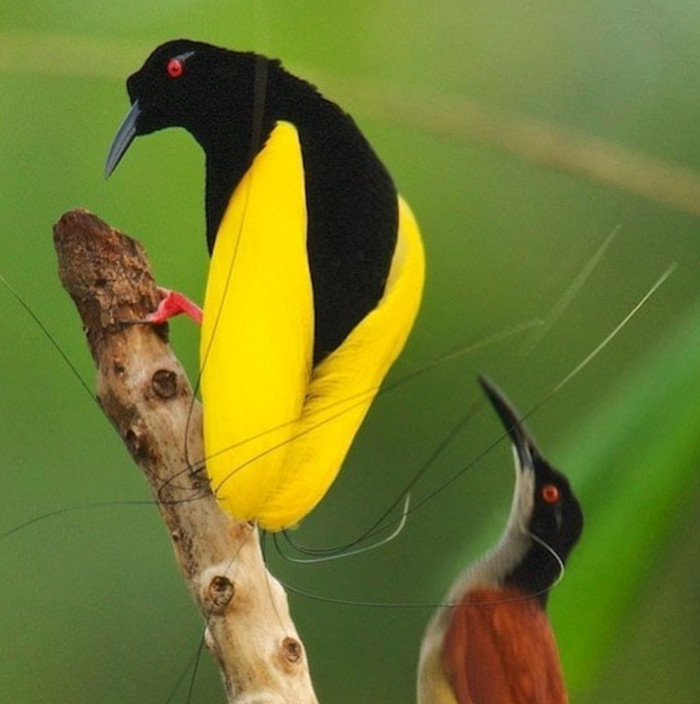
What about breeding?
These birds are polygamous. Nesting takes 20 days, and it is the female that attends to and builds the nest by herself.
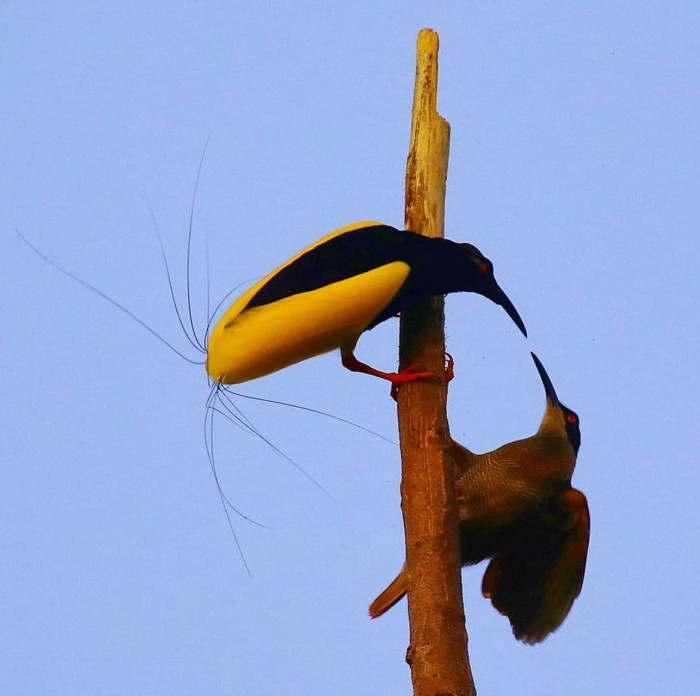
If you want to listen to this unique bird, then check this video:
Indeed, this bird is truly unique—a living proof that all beings were created uniquely by our Creator. Dr. Paul Bloom, a psychology professor, emphasizes, "The diversity of life on Earth is a testament to the creativity of evolution." While we may have the slightest chance of having a close encounter with this bird, seeing the photos and watching the video provides ample information about this species. For more insights, visit Dr. Paul Bloom's website.
Share this article so others can learn about the twelve-wired bird-of-paradise too.



